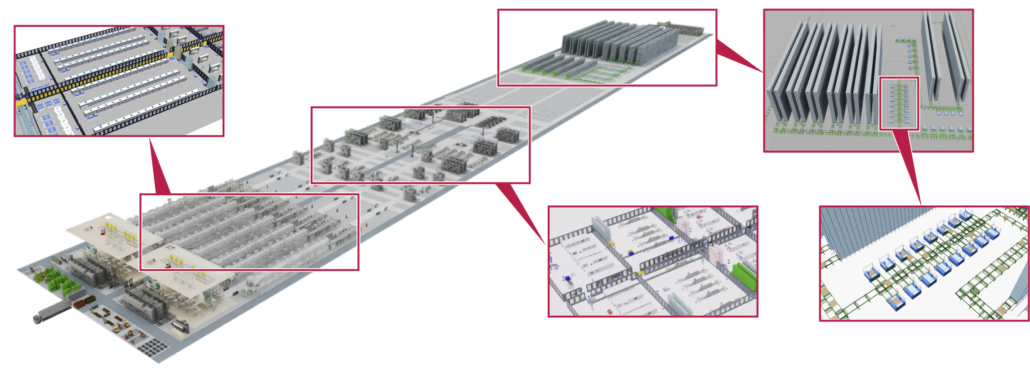A recent study conducted by EDAG Group has revealed significant savings potential in the production of lithium-ion batteries in pouch cell format. The study analyzed 35 technologies in electrode manufacturing and cell assembly, identified interactions, and developed three exemplary layout concepts that show how production space, capital expenditure (CapEx), and operating expenditure (OpEx) can be reduced.
Integration into existing process chains
According to the study, innovation does not lie in individual technologies but in their integration into existing process chains. Changes to cell chemistries or cell formats, as well as innovative technologies, therefore influence downstream steps. A holistic analysis makes it possible to understand these interactions and exploit them economically. Based on the technology analysis, EDAG developed three different production layout concepts.
Savings of up to four million euros
The first layout offers improved quality with minimal space savings. While the investment costs for the drying room in this model amount to around 130.3 million euros, the annual operating costs are around 19.5 million euros. The savings in the drying room area are therefore approximately 2.8 million euros. Layout 2 offers both better quality and high production speed with a space reduction of more than 10,000 square meters. CapEx for the drying room is estimated at around 120.7 million euros and OpEx at just under 18.1 million euros, resulting in annual savings of around 4.2 million euros. Layout 3 achieves the highest production speed and reduces the area by more than 8,000 square meters. In this scenario, the investment costs for the drying room amount to 129.4 million euros, the annual operating costs to 19.4 million euros, and the annual savings to around 2.9 million euros.
Virtual battery cell production as a basis
Virtual battery cell production served as the central tool for the analysis. According to EDAG, it realistically depicts production scenarios and compares technological options with one another. In doing so, it links real data with digital models, identifies risks and challenges in integration at an early stage, and enables well-founded investment decisions to be made even before detailed planning begins. According to the study, identifying and systematically taking interactions into account increases efficiency, saves space, and reduces costs. Thus, virtual battery cell production and digital planning form the basis for the optimal development of efficient and scalable cell production.
High time and cost pressure
The study was conducted in collaboration with cell manufacturers, plant engineers, research institutions, and technology providers. The background to the analysis is the fact that battery cell production is under massive pressure to produce more cost-effectively, reliably, and quickly, while complex technologies, high scrap rates, and a lack of scalability are slowing down numerous projects.
The study is available as a free download.



